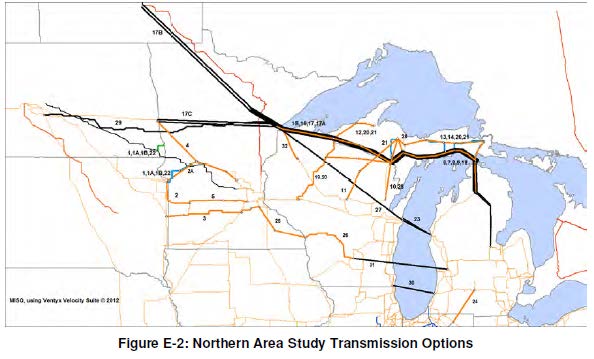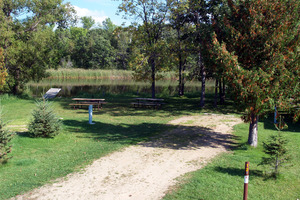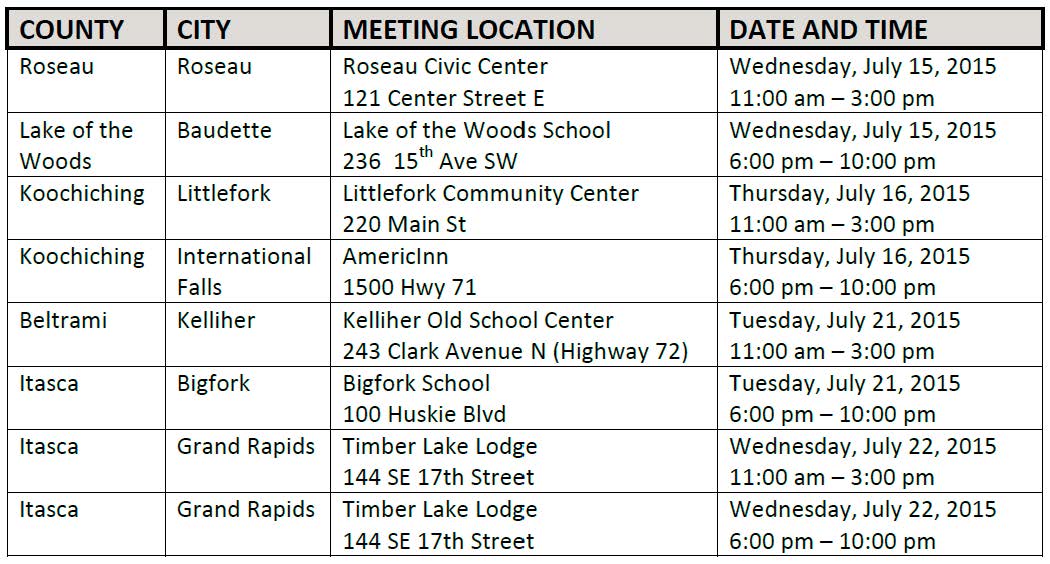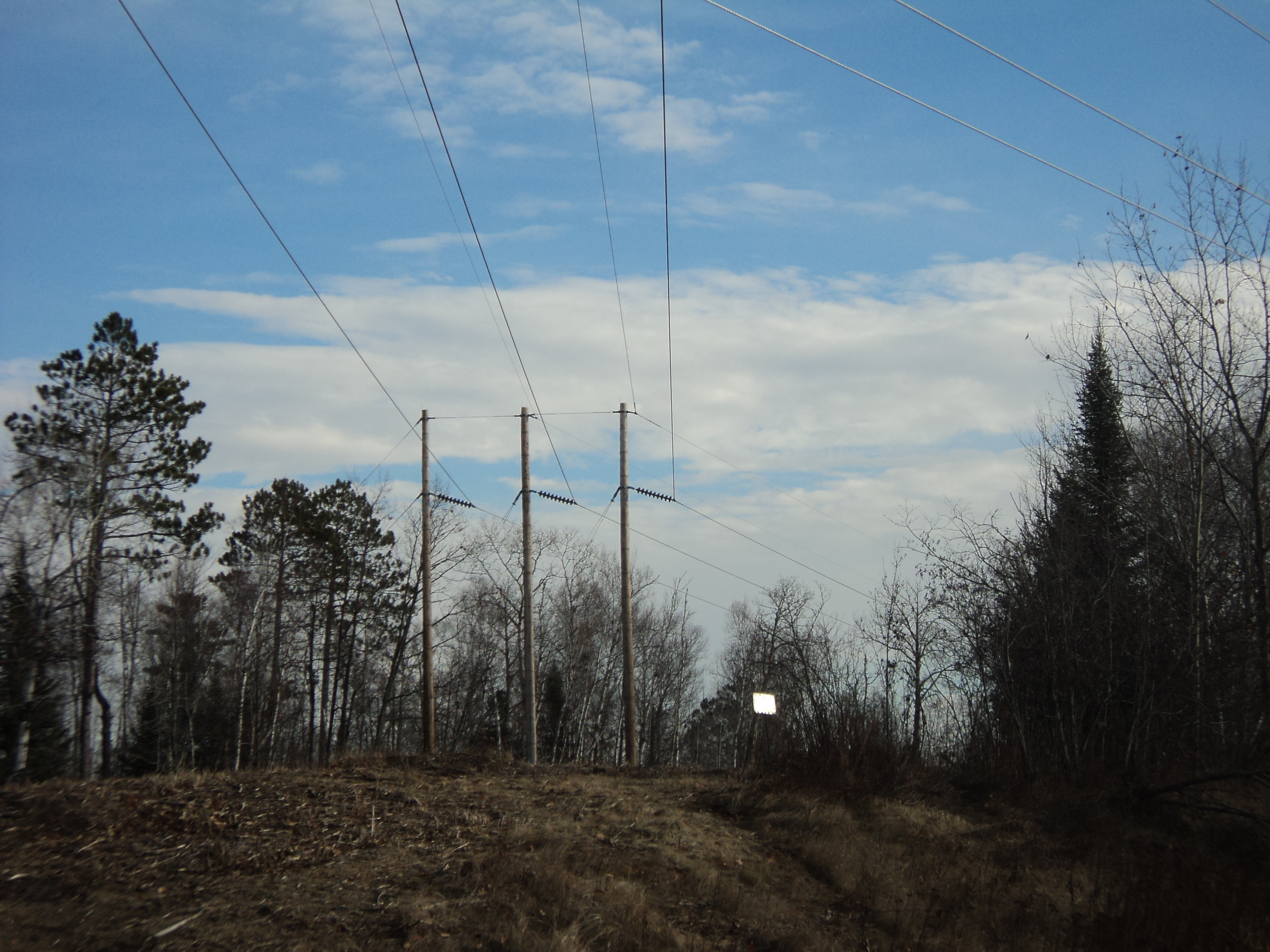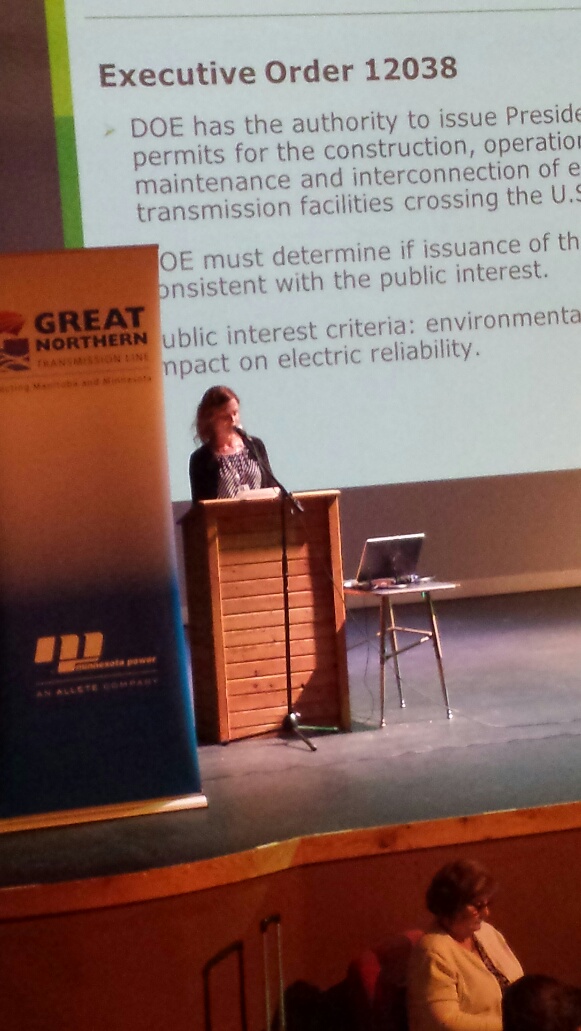Heading up north for a time out… errrrrrr… GNTL Draft EIS hearings, yeah, that’s it! Figured I’d best take a look at the DEIS, woke up with that on the brain. One sick puppy, for sure. Anyway, the Minnesota Power GNTL site doesn’t have the files right, so best to go here:
Table of Contents, Cover Sheet, Abstract, Summary (.PDF, 5.7 MB)
Summary (.PDF, 6.0 MB)
Chapter 1 – Regulatory Framework (PDF, 2.5 MB):Describes the regulatory framework associated with the proposed Project, including the purpose and need for agency action, major federal permits (including the U.S. DOE Presidential permit), federal consultation requirements, state permitting requirements (including the MN PUC Route Permit), other state and local permits, and a summary of agencies, tribes, and persons consulted.
Chapter 2 – Proposed Project (PDF, 2.8 MB): Describes the project as proposed by the Applicant including proposed routes, structures, objectives, route selection process, estimated costs, and proposed schedule. Chapter 2 also describes the Applicant’s engineering, design, and construction plans, land acquisition processes, and Applicant proposed measures to avoid and minimize environmental impacts.
Chapter 3 – No Action Alternative (PDF, 1.2 MB): Describes the “No Action alternative,” in which the DOE would not issue a Presidential permit and the proposed Project would not be built. The analysis of the No Action alternative summarizes the impacts of not constructing the project and provides a baseline for analyzing and comparing potential environmental impacts from DOE’s proposed action and alternatives.
Chapter 4 – Route and Alignment Alternatives Proposed during Scoping (PDF, 19 MB): Describes the four border crossing alternatives, 22 route variations, and nine alignment modifications that were proposed by agencies and the public during scoping. Chapter 4 also summarizes the process used by DOE in coordination with the DOC-EERA to jointly determine which border crossings and routes to include in the scope of this EIS. Chapter 4 also describes how the selected routes, route variations, and alignments are analyzed by dividing the 220-mile long project area into the three major sections: the West Section, the Central Section, and the East Section.
Chapter 5 – Affected Environment and Potential Impacts (PDF, 32 MB): Describes the affected environment for the proposed Project, including descriptions of each resource, the region of influence (ROI) of the proposed Project on the resource, and impacts expected from the construction, operation, maintenance, and connection of the proposed Project. Chapter 5.0 first describes the impacts of the proposed Project that are common to all geographic sections and do not vary by route or route variation. Chapter 5.0 then describes the resources that do vary by geographic section and for which impacts vary by route and route variation—the impacts and resources are carried forward for detailed analysis and comparison in Chapter 6.0.
Chapter 6 – Comparative Environmental Consequences (PDF, 65 MB): Presents detailed analysis and comparison of the potential human and environmental impacts of the proposed Project and alternative route variations, and describes mitigation measures by geographic section, route, and route variation.
Chapter 7 – Cumulative and Other Impacts (PDF, 4.8 MB): Describes reasonably foreseeable projects in the proposed Project area and assesses impacts of the proposed Project in the context of these reasonably foreseeable projects along with other past and present projects in the same area. Chapter 7 also describes unavoidable, irretrievable, and other impacts as required by federal and state regulations.
Chapter 8 – List of Preparers (PDF, 1.7 MB): Provides a list of the preparers of this EIS.
Chapter 9 – References (PDF, 1.8 MB): Provides references for resources used in development of this EIS.
Chapter 10 – Acronyms and Abbreviations (PDF, 1.7 MB): Lists of the acronyms and abbreviations used in this EIS.
Chapter 11 – Index (PDF, 1.4 MB): Provides an index of terms used in this EIS.
Appendices – Provides information to support the analysis in this EIS:
- Appendix A – Tribal Consultations (.PDF, 3.75 MB): Provides documentation of and correspondence for the DOE’s government-to-government consultation under Section 106 of the National Historic Preservation Act (National Historic Preservation Act (NHPA) and in accordance with Executive Order 13175.
- Appendix B – Route Permit Generic Template and Example (.PDF, 8.9 MB): Provides MN PUC’s generic Route Permit template and an example of a Route Permit recently issued by the MN PUC, which include a permitted route and anticipated alignment, as well as standard and special conditions specifying construction and operation standards.
- Appendix C – Narrative of the Scoping Summary Report (.PDF, 2.8 MB): Provides the narrative from the EIS Scoping Summary Report summarizing the joint scoping process and associated public and agency comments provided during the public scoping period for the proposed Project.
- Appendix D – DOC-EERA Scoping Decision (.PDF, 5.98 MB): Provides the DOC-EERA scoping decision issued for this EIS on January 8, 2015.
- Appendix E – Route Analysis Data Tables (.PDF, 3.32 MB): Provides detailed data for the right-of-way (ROW), route, and region-of-interest (ROI) for the proposed routes and variations analyzed in this EIS.
- Appendix F – Rare Species Data Tables (.PDF, 1.5 MB): Provides detailed MnDNR Natural Heritage Information System rare species data for the ROW, route, and region-of-interests (ROIs) for the proposed routes and variations analyzed in this EIS.
- Appendix G – Rare Communities Data Tables (.PDF, 566 kb): Provides detailed Minnesota Biological Survey native plant community rare communities data for the ROW, route, and region-of-interests (ROIs) for the proposed routes and variations analyzed in this EIS.
- Appendix H – Noise Supplement (.PDF, 231 kb): Provides terminology and regulations for noise and project-specific noise information.
- Appendix I – Applicant’s Audible Noise and EMF Calculations (.PDF, 2.3 MB): Provides the Applicant’s modelling results for audible noise, electric and magnetic field (EMF), and corona effects from the proposed Project.
- Appendix J – Property Values Supplement (.PDF, 179 kb): Provides information and literature regarding the effect of transmission lines on property values.
- Appendix K – EMF Supplement (.PDF, 167 kb): Provides information regarding EMFs.
- Appendix L – Stray Voltage Supplement (.PDF, 32 MB): Provides information regarding stray voltage.
- Appendix M – MPCA What’s In My Neighborhood Sites (.PDF, 592 kb): Provides a list of sites in the proposed Project area identified by the Minnesota Pollution Control Agency (MPCA) program – What’s In My Neighborhood” – that may have environmental permits or registrations, or are potentially contaminated sites.
- Appendix N – Photo Simulations (.PDF, 343 MB): Provides photo simulations developed for sensitive viewsheds identified in public comments during the public scoping period for the proposed Project.
- Appendix O – Agricultural Impact Mitigation Plan (AIMP) Example (.PDF, 2.26 MB): Provides an example of a AIMP prepared for a high-voltage transmission line project.
- Appendix P – Cultural Resources Report (.PDF, 5.2 MB): Provides the Phase IA cultural resources survey report for the proposed Project.
- Appendix Q – USFWS and DOE Section 7 Consultation (.PDF, 529 kb): Provides the USFWS letter initiating informal consultation with the DOE under Section 7(a)(2) of the Endangered Species Act (ESA) for the proposed Project.
- Appendix R – Biological Assessment (.PDF, 129 kb) : Provides the report which reviews the proposed Project in sufficient detail to determine if the proposed action may affect any federally threatened or endangered species and/or critical habitat.
- Appendix S – Detailed Map Books (.PDF, 116 MB): Provides maps with detailed information for the ROWs and routes for the proposed routes and variations discussed in this EIS.
- Appendix T – NEPA Disclosure Statements (.PDF, 1.11 MB): Provides signed copies of the NEPA Disclosure Statements.

